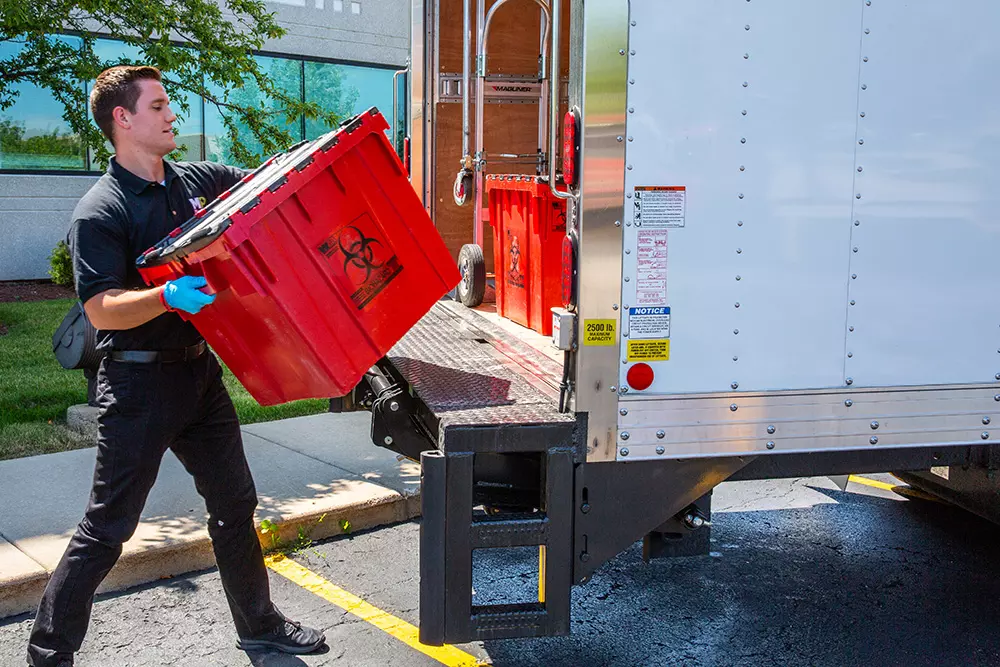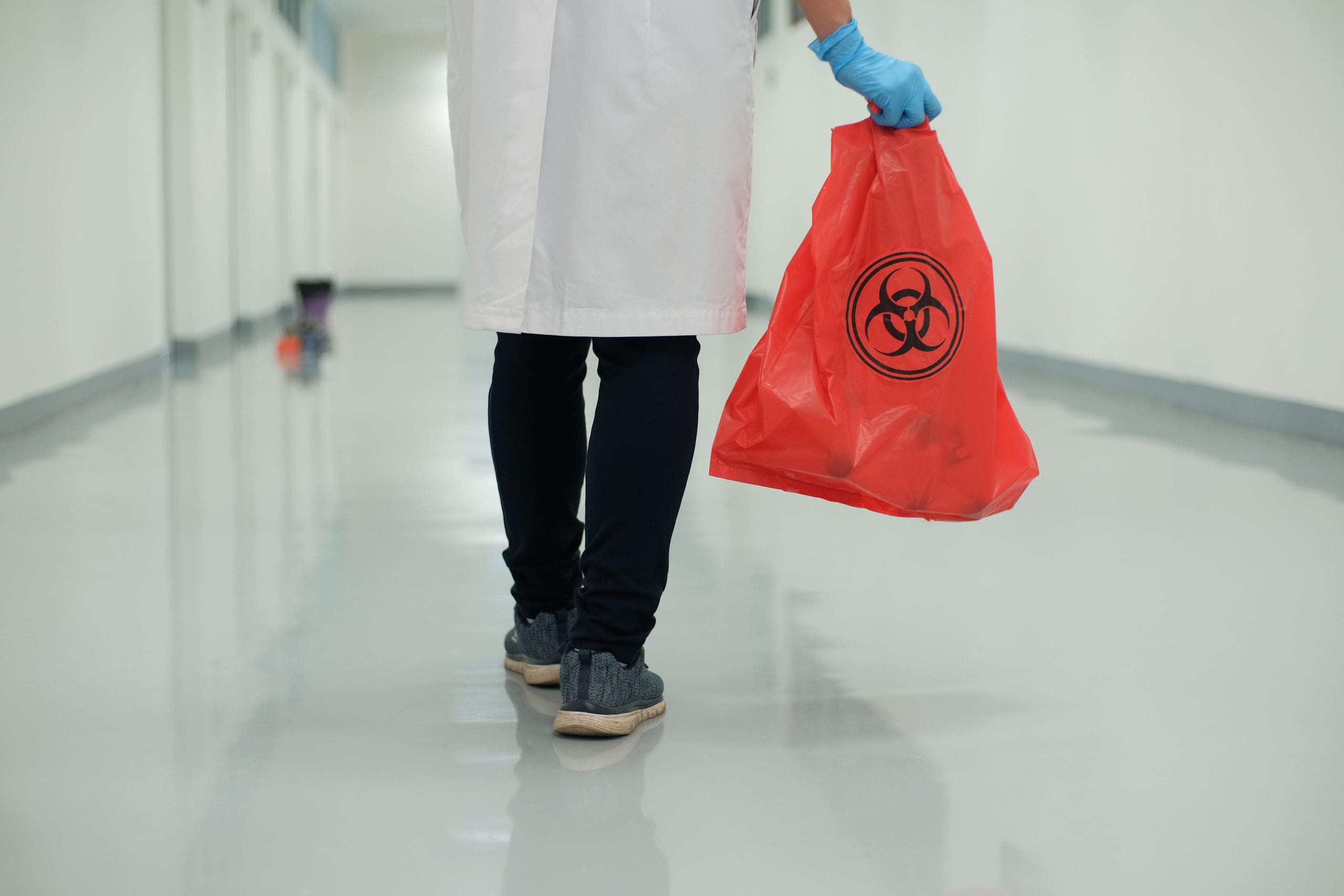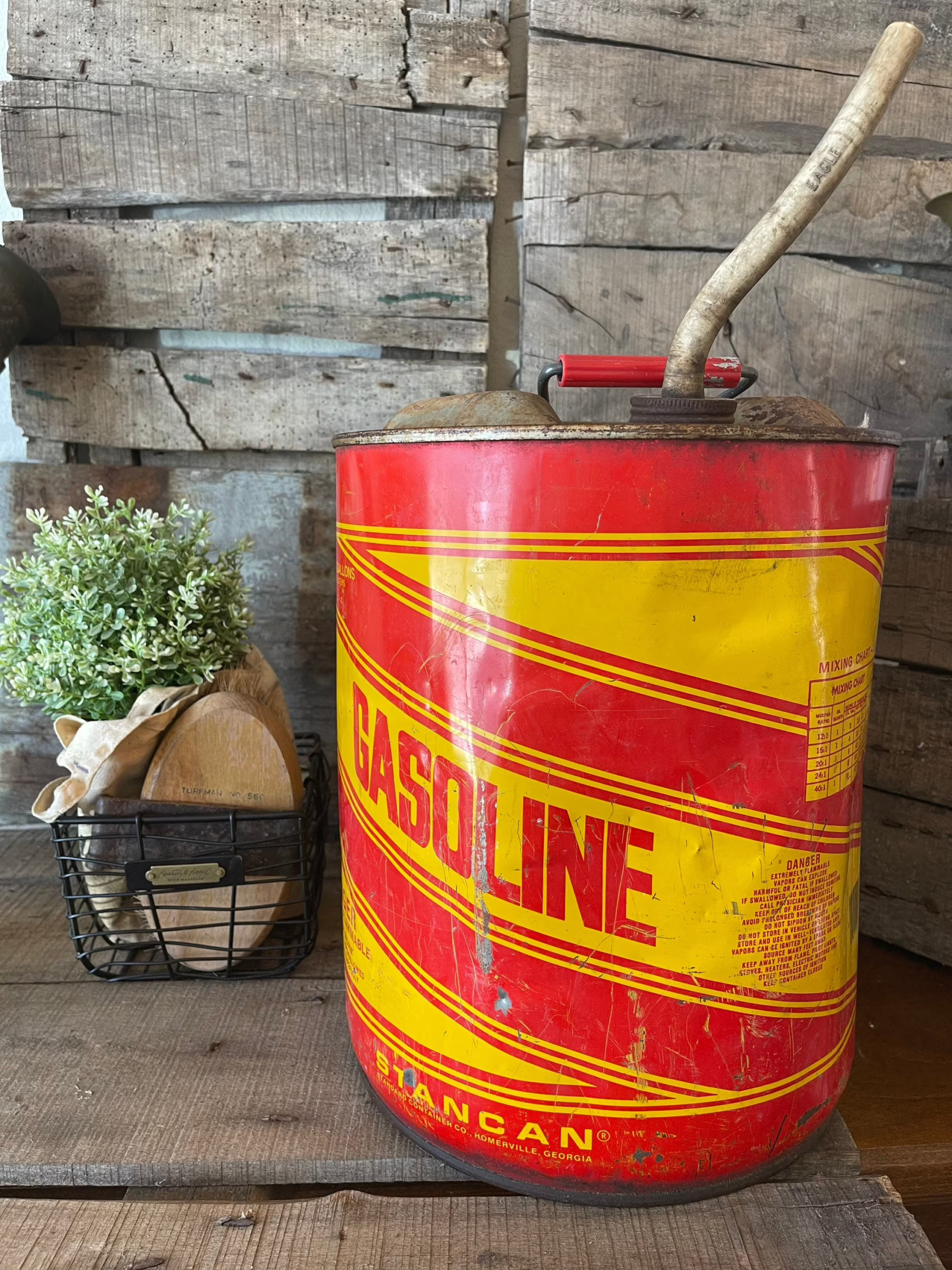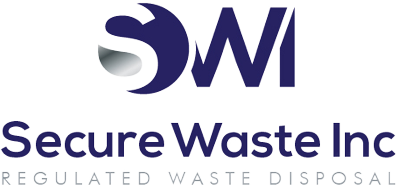Where Does Medical Waste Go? A Step-by-Step Guide For Medical Waste: Expert Solutions On Healthcare Waste Management From Secure Waste
Have you ever wondered how the intricate process of medical waste management operates? From its inception in a local healthcare office, dental office, or clinic to its final disposal, this journey is crucial to maintaining public health and safety. It begins with the generation of medical waste, collection in designated storage areas, and involves the meticulous pick-up by specialized medical waste disposal companies. Following this, the waste undergoes treatment processing to neutralize potential hazards, ultimately leading to its responsible final disposal. Secure Waste is here to unravel this complex process and provide clear, easy-to-follow steps for effective medical waste management.

Medical Waste Generation Starts In The Office
We want to begin by discussing what is commonly referred to in the industry as the medical waste generator. This term encompasses any entity that produces regulated medical waste or sharps containers. This includes, but is not limited to, medical practitioners such as doctors and dentists, clinics, tattoo parlors, surgery centers, and even funeral homes. Each of these establishments, among others, generates regulated medical waste as part of their daily operations. Before proceeding further, defining what constitutes regulated medical waste is essential.
Have you ever wondered what regulated medical waste is? Let’s dive into its definition and uncover its importance!
Medical waste, often referred to as healthcare or biomedical waste, encompasses a variety of solid waste generated during the diagnosis, treatment, or immunization of humans or animals. This type of waste can pose potential health hazards and environmental risks if not managed correctly. It includes several categories, each requiring specific handling and disposal protocols:
1. Infectious Waste: This includes materials that can transmit pathogens and cause infections. Examples are blood, human tissues, organs, needles, syringes, laboratory cultures of microorganisms, and contaminated dressings. Proper containment is crucial to prevent accidents and exposure.
2. Sharps Waste: Items that can puncture or cut skin fall into this category. This includes needles, scalpels, blades, broken glass, and other sharp instruments used during medical procedures. Sharps must be disposed of in specialized containers to minimize the risk of injury.
3. Pathological Waste: Human body parts, tissues, and specimens removed during surgical procedures or autopsies. The disposal of pathological waste often requires incineration or other methods to ensure destruction and prevent any potential for disease transmission.
4. Pharmaceutical Waste: This category pertains to expired, unused, or contaminated medications, including chemotherapy drugs and their containers. Special considerations are necessary to dispose of pharmaceutical waste to prevent environmental contamination and misuse.
5. Biohazardous Waste: Any waste containing infectious agents, toxins, or harmful microorganisms falls under this category. If not appropriately treated, biohazardous waste poses significant risks to public health and the environment, often requiring incineration or sterilization before disposal.
6. Medical Devices: Disposable items such as gloves, gowns, masks, and other personal protective equipment (PPE) used in healthcare settings also comprise a critical component of medical waste. While these items are often less hazardous, they require appropriate disposal to prevent environmental contamination.
Government agencies at both the federal and state levels strictly regulate medical waste to ensure safe handling, storage, and disposal practices. Facilities generating medical waste must adhere to guidelines that include proper segregation of waste types, staff training, and thorough documentation of waste management processes.
I want to point out that not all waste generated in healthcare settings is classified as medical waste. For example, standard household garbage, such as used tissues, diapers, and other non-hazardous items, typically does not fall under the medical waste category. Understanding the distinctions between types of healthcare waste is vital for ensuring safety and compliance with health regulations.
Now Let’s Get Back To Regulated Medical Waste In The Office
It’s essential to have a proper disposal system in place in the daily operations of any facility that generates medical waste. Most medical practices use small receptacles, typically marked with a biohazard symbol, to collect loose or miscellaneous waste items in each exam room. Additionally, offices that handle sharp objects like needles must utilize designated sharps containers to ensure safe disposal.
This collection process continues until the receptacles are full. Some facilities will transfer the contents of their medical waste trash cans into a larger container known as a medical waste box. It’s important to note that while sharps containers do not fill up as quickly, when they are full, they are also placed in the medical waste box for proper disposal. This systematic approach helps maintain safety and compliance within medical environments.
The Medical Waste Box. What Is It And How To Use It
In medical waste disposal, one crucial component is the medical waste box—more details can be found here. The medical waste box is a sizable, durable container designed to safely hold various medical waste, including sharp objects disposed of in sharps containers. Typically, healthcare facilities will store this box in a dedicated storage closet in a laboratory or workspace where medical staff operate. Its utilitarian design and robust construction make it an essential item, albeit not aesthetically pleasing for an exam room. Regardless of its appearance, the medical waste box plays a vital role in ensuring safe disposal protocols are adhered to.
Once the medical waste box reaches capacity, your medical waste disposal company will arrange a scheduled pickup. Depending on the volume of waste generated, this pickup could occur weekly, monthly, or as-needed (PRN Will-Call). It’s worth noting that some jurisdictions have regulations mandating pickups even if the container isn’t full, emphasizing the importance of compliance with local waste management laws.
Final disposal of your medical waste box involves a meticulous process. After collection, Secure Waste transports the contents—comprising the medical waste box and any additional large waste containers like sharps containers—to one of their specialized processing facilities. The waste undergoes either autoclaving or incineration at these facilities, depending on the type of waste and regulations governing its treatment.
Throughout this process, medical waste tracking manifests meticulously, following the waste from its origin to its final disposal. This document serves as a critical record, ensuring accountability at every stage. Once the waste has been processed and treated to comply with health and safety standards, it is rendered unrecognizable and subsequently accepted as regular solid waste, allowing it to be safely deposited in a landfill. Understanding this comprehensive process is crucial for medical facilities to ensure they manage their waste responsibly and in alignment with regulations.

Expert Medical Waste Management: With over 25 years of industry experience, Secure Waste is a trusted local leader in hazardous and biohazardous waste disposal across Maryland, Virginia, and Washington, D.C. Specializing in medical waste management, sharps needle disposal, and biohazard waste removal, the company ensures full compliance with federal, state, and local regulations while prioritizing environmental sustainability.
The company also offers additional services, including secure document shredding and sharps container sales, providing comprehensive solutions for healthcare facilities and businesses. Our cost-effective services help clients maintain regulatory compliance without unexpected costs.
With a commitment to customer satisfaction, Secure Waste offers tailored waste management plans that align with industry best practices. Their team of experts provides reliable, timely, and compliant services, making them the preferred choice for medical waste disposal. For a free waste quote or more information, visit www.securewaste.net






